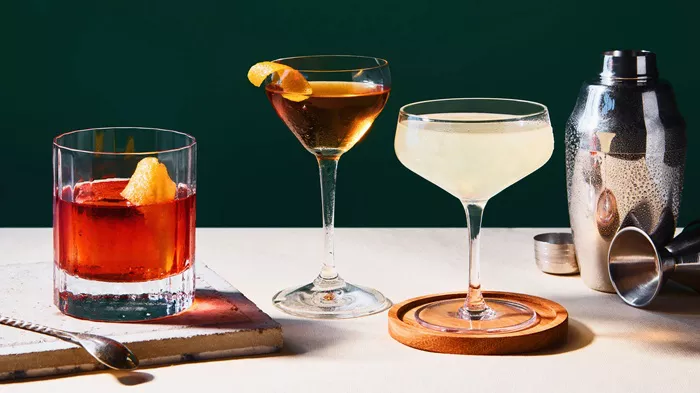When it comes to unwinding after a long day or celebrating a special occasion, many turn to alcoholic beverages. Cocktails, with their myriad of flavors and ingredients, often take center stage in social gatherings and nightlife scenes. But amidst the enjoyment of sipping on a well-crafted cocktail, questions arise about their potency compared to other alcoholic beverages, particularly beer. This article seeks to dissect the age-old debate: do cocktails get you drunk faster than beer?
Understanding Alcohol Content and Absorption
Before delving into the specifics of cocktails versus beer, it’s crucial to grasp the fundamental factors at play: alcohol content and absorption rates. Cocktails typically contain spirits like vodka, gin, rum, or whiskey, which boast a higher alcohol by volume (ABV) compared to beer. For instance, a standard shot of vodka may contain around 40% ABV, while a typical beer might range between 4% to 6% ABV.
However, alcohol absorption isn’t solely dependent on ABV; the rate at which alcohol enters the bloodstream is influenced by various factors, including the drinker’s body weight, metabolism, and whether they’ve consumed food alongside their drinks. Cocktails, especially those mixed with sugary syrups or fruit juices, can sometimes mask the taste of alcohol, potentially leading individuals to consume them more rapidly than beer, thus affecting absorption rates.
The Role of Mixing and Dilution
One distinguishing feature of cocktails is the art of mixing. Bartenders skillfully blend various spirits, liqueurs, and mixers to create complex and flavorful concoctions. This mixing process can affect how quickly one feels the effects of alcohol.
In some cases, cocktails may be diluted with ice, water, or soda, which can slow down the rate of alcohol absorption. However, it’s essential to note that the dilution factor varies depending on the specific cocktail recipe and how it’s prepared. Conversely, certain cocktails, such as shots or those served “neat” (without ice or mixers), deliver alcohol to the bloodstream more rapidly due to their higher concentration.
Considerations of Serving Size
Another aspect to consider when comparing cocktails to beer is serving size. Cocktails often come in smaller portions, typically served in glasses ranging from 4 to 8 ounces. On the other hand, beer servings are usually larger, with a standard bottle containing 12 ounces or more.
Despite their smaller size, cocktails can pack a punch due to their higher alcohol concentration. Consuming multiple cocktails within a short timeframe can lead to a faster rise in blood alcohol concentration (BAC) compared to drinking the equivalent volume of beer.
Impact of Alcohol on the Body
Regardless of whether one opts for cocktails or beer, the physiological effects of alcohol remain consistent. Upon consumption, alcohol is rapidly absorbed into the bloodstream, where it begins to affect the central nervous system. It acts as a depressant, slowing down brain function and impairing cognitive and motor skills.
The speed at which one becomes intoxicated depends on several factors, including the rate of alcohol absorption, individual tolerance levels, and whether they’re consuming alcohol on an empty stomach. While cocktails may contain higher alcohol content per serving, the timeframe in which one feels intoxicated is influenced by various variables beyond the type of beverage consumed.
Cultural and Social Influences
In addition to physiological factors, cultural and social influences play a significant role in shaping drinking habits and perceptions of intoxication. Cocktails are often associated with sophistication, nightlife, and special occasions, leading individuals to indulge in them in a celebratory or recreational context.
On the other hand, beer holds a prominent place in many social settings, from casual gatherings with friends to sporting events and beer festivals. The pace at which individuals consume alcoholic beverages in these settings can vary, impacting how quickly they feel the effects of alcohol.
Responsible Drinking Practices
Amidst discussions of alcohol consumption, it’s paramount to emphasize the importance of responsible drinking practices. Regardless of whether one chooses cocktails or beer, moderation is key to avoiding the negative consequences of excessive alcohol consumption.
Understanding one’s limits, pacing oneself, and staying hydrated can help mitigate the risks associated with alcohol consumption. Additionally, avoiding drinking on an empty stomach and alternating alcoholic beverages with non-alcoholic options can aid in maintaining control and reducing the likelihood of overindulgence.
Conclusion: A Matter of Perspective
In the debate over whether cocktails get you drunk faster than beer, the answer isn’t straightforward. While cocktails typically have a higher alcohol content per serving, factors such as absorption rates, serving size, and individual tolerance levels all contribute to how quickly one feels the effects of alcohol.
Ultimately, the choice between cocktails and beer comes down to personal preference, occasion, and social context. Whether savoring a well-crafted cocktail or enjoying a cold beer with friends, responsible drinking should always be the priority. By understanding the factors at play and exercising moderation, individuals can make informed choices and enjoy alcoholic beverages safely and responsibly.


